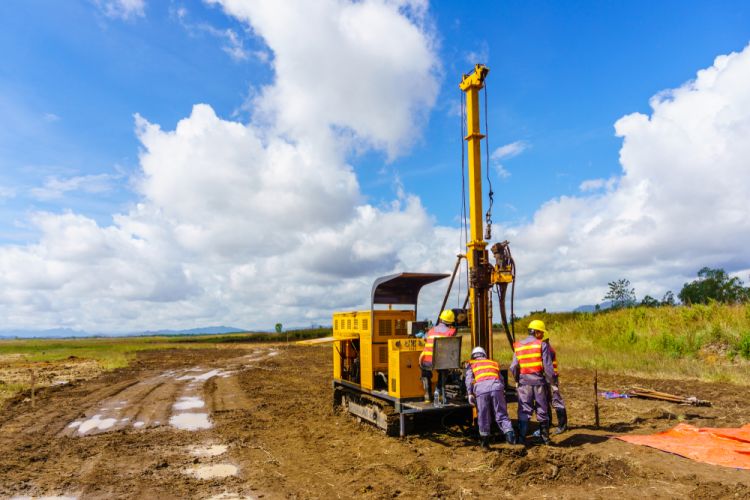Facts About Geotechnical Engineering For Construction Projects Uncovered
Table of ContentsGeotechnical Engineering For Construction Projects Fundamentals ExplainedThe Greatest Guide To Geotechnical Engineering For Construction ProjectsGeotechnical Engineering For Construction Projects Can Be Fun For EveryoneAll about Geotechnical Engineering For Construction ProjectsThe Only Guide for Geotechnical Engineering For Construction ProjectsGetting The Geotechnical Engineering For Construction Projects To WorkFascination About Geotechnical Engineering For Construction Projects
Concepts and Method of Ground Improvement. Ground Enhancement Principles And Applications In Asia. Layout analysis in rock auto mechanics.Cengage Understanding, Stamford, 666 p. Atkinson, J., 2007. The technicians of dirts and foundations. The Observational Approach in ground design principles and applications.
The 2-Minute Rule for Geotechnical Engineering For Construction Projects
Lab and area testing plays an important duty in this process. By drawing out examples from the planet's subsurface and applying a suite of tests, geotechnical designers can predict the behavior of dirt layers and evaluate their suitability for different building endeavours. The essence of geotechnical design in civil design can not be overstated, attributable to a number of variables: The initial action in any type of geotechnical research includes establishing the dirt kind at the construction website.
Understanding these qualities ensures that only appropriate dirt kinds are picked for the growth, therefore averting potential architectural failures. The foundation works as the bedrock of any kind of building and construction project. Selecting the ideal structure kind is a choice that rests on the thorough evaluation provided by geotechnical design. This makes certain the long life and security of frameworks by suiting the lots they will certainly bear.
Geotechnical site investigation is a crucial action in the preparation and execution of any kind of construction project. It includes the collection and analysis of data associated with the physical buildings of soil and rock underneath a recommended building website. This details is vital for the style and building of secure, steady, and lasting structures.
The Basic Principles Of Geotechnical Engineering For Construction Projects
, additionally recognized as subsurface exploration, involves a series of activities aimed at determining the soil, rock, and groundwater problems at a building and construction website. The key objectives are to identify potential geotechnical risks, evaluate the engineering homes of subsurface products, and supply suggestions for the style and building of structures, preserving wall surfaces, and other structures.
The workdesk research aids in recognizing possible geotechnical concerns and preparing the subsequent fieldwork. This entails observing the topography, drain patterns, existing frameworks, plant life, and any kind of indications of instability or disintegration.
5 Easy Facts About Geotechnical Engineering For Construction Projects Described
Superficial test pits are dug deep into to directly observe and example the soil and rock. This approach is beneficial for studying the upper layers of the subsurface and identifying near-surface risks. Non-invasive geophysical techniques, such as seismic refraction, ground-penetrating radar (GPR), and electric resistivity tomography (ERT), are used to map subsurface problems and spot abnormalities.
Soil and rock samples gathered throughout the area examination are subjected to research laboratory screening to determine their physical and mechanical residential or commercial properties. These tests offer important data for geotechnical analysis and layout.
The key advantage of geotechnical site examination is ensuring the safety and stability of frameworks. By recognizing the subsurface problems, designers can make structures and various other structural elements that can hold up against the lots and ecological forces they will undergo. This lessens the risk of negotiation, decrease, and structural failure.
The Ultimate Guide To Geotechnical Engineering For Construction Projects
This makes sure reliable and safe building and construction practices. Geotechnical site examinations are frequently needed by developing codes and guidelines.
This details is invaluable for project managers, designers, and professionals in developing realistic routines, budget plans, and backup plans. Geotechnical Engineering for Construction Projects. Skyscraper in a Coastal AreaIn a coastal city, a high-rise domestic structure was prepared on a site with presumed loose sand deposits and a high water table. A detailed geotechnical investigation, consisting of borehole drilling, CPT, and geophysical studies, was conducted
What Does Geotechnical Engineering For Construction Projects Do?
Based on these findings, the structure style was modified to include deep pile structures prolonging into secure strata, and ground renovation strategies, such as vibro-compaction, were implemented to reduce liquefaction risks. This aggressive method made certain the security and stability of the structure while staying clear of costly post-construction remediation. Framework Advancement on a Sloping TerrainA major framework project, including the construction of a highway and bridges, was planned on a hilly terrain with high slopes.

The Leaning Tower of Pisa (Italy), a renowned architectural wonder, is infamous for its unintended tilt from considerable geotechnical problems. The tower's foundation was improperly developed to take care of the soft, unstable dirt under it, causing uneven negotiation and its distinct lean. Our world is populated with outstanding infrastructure projectsfrom looming high-rise buildings to sprawling bridgesall standing testament to the evolution of the different building tools and methods offered.
Geotechnical engineering is a customized area within civil browse around these guys design that concentrates on studying the actions of planet materials. This branch digs deep right into the Learn More Here groundinvestigating how the soil, rock, and groundwater at a building and construction site can influenceand be influenced bythe facilities that we put up on and into them. Prior to a solitary block is laid or a concrete structure put, geotechnical engineers probe right into the earthgathering crucial data concerning the site's soil composition, rock structure, and groundwater levels.
Geotechnical Engineering For Construction Projects Things To Know Before You Get This

is a device made use of to assess the stability and load-bearing ability of heaps during installment, leveraging the concept of wave propagation. It enhances building and construction performance by offering real-time assessments, therefore ensuring secure and effective pile structures. Among the practical applications of geotechnical engineering entails deciding and implementing the appropriate techniques for structure building and construction.
Stack driving represents greater than the mere act of visit the site inserting structural aspects into the ground. As a matter of fact, it is a meticulously orchestrated process of moving a framework's tons past the much less stable dirt layers better to the surfacedown to the much more considerable strata that exist below. In the case of heap driving, think about just how geotechnical designers skillfully utilize this technique to equally distribute the framework's weight.
Comments on “Geotechnical Engineering For Construction Projects Can Be Fun For Everyone”